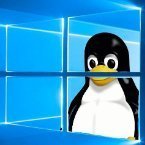- 0 replies
- 544 views
- Add Reply
- 1 reply
- 1,481 views
- Add Reply
- 1 reply
- 2,219 views
- Add Reply
- 0 replies
- 1,998 views
- Add Reply
- 0 replies
- 1,343 views
- Add Reply
Flooding in Somalia and Ethiopia

By Lurker,
Flash floods caused by heavy rains have killed at least 14 people, displaced thousands more, and destroyed properties and homes in several areas of Somalia signalling an early start of the Gu rainy season, which usually runs from April to June.
Those who have lost their homes are now living in makeshift shelters on higher ground, which are severely overcrowded and lack water and sanitation facilities. The Somali Disaster Management Agency (SoDMA) said it is the worst flooding in almost a de
A navigation system has been created that is more accurate than GPS

By Lurker,


The novel system uses mobile telecommunication rather than satellites
The researchers from Delft University of Technology, Vrije Universiteit Amsterdam, and VSL developed an alternative positioning system that uses mobile telecommunication rather than satellites, which could potentially make it more accurate and reliable than GPS.
“We realized that with a few cutting-edge innovations, the telecommunication network could be transformed into a very accurate alternative positi
SQL for ArcGIS Pro
By Capricorn,
Hi people,
Has anyone tried this Manifold add-in for ArcGIS Pro?
https://manifold.net/info/sql4arc.shtml
Is it really so good in providing spatial SQL for Esri file geodatabases, the steps we miss in ArcMap and ArcGIS Pro?
QGIS 3.30 ‘s-Hertogenbosch is released!

By Lurker,
The 3.30 ‘s-Hertogenbosch release of the groundbreaking QGIS project introduces a wide range of changes and optimizations from the QGIS developer community.
The splash screen features a fragment of the “Gemeentekaart”, or Municipality map, of ‘s-Hertogenbosch from 1867. It is part of a series of 1200 maps of all the communities in The Netherlands from that time, which were published in an atlas for each of the 11 regions. All maps were drawn in the same size, although for large municipaliti
What's new in ArcGIS Pro 3.1

By Lurker,
Catalog layers
You can create and draw catalog layers in maps and scenes. A catalog layer is a collection of item references to local and shared datasets, layers, services, and workspaces from various work environments.
Automatic resizing of layout elements
When you change the page size or orientation of a layout, you can automatically resize and reposition layout elements.
Time-enabled scene layers
You can time-enable point, 3D object, or building scene layers to visu
-
Forum Statistics
8.8k
Total Topics43.5k
Total Posts




